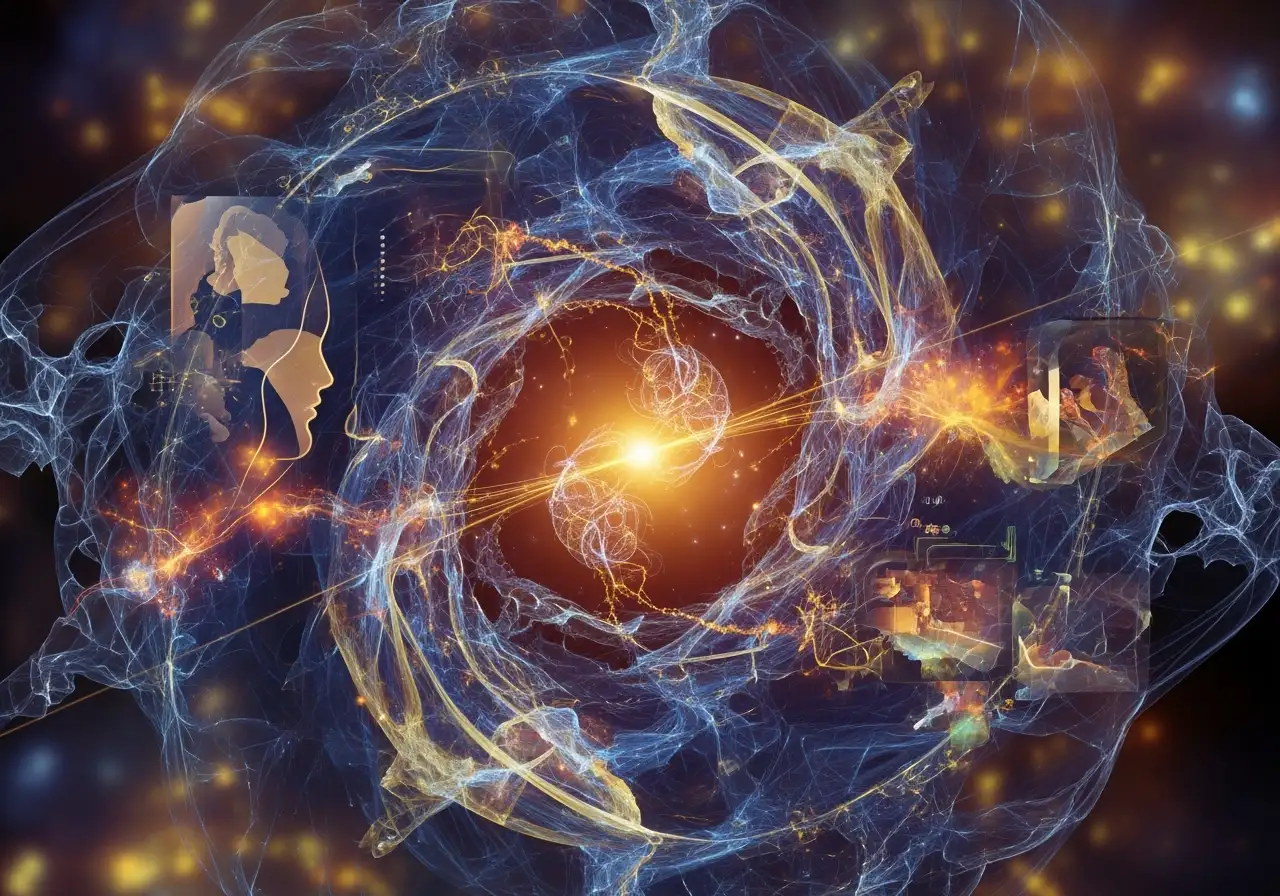The Quantum Science of Mental Snapshots
The Quantum Science of Mental Snapshots
Have you ever felt trapped by a negative thought or a wave of anxiety, convinced it would never end? Like Alex, our archetypal entrepreneur from the Quantum Mindfulness framework, many of us experience these moments as overwhelming, continuous streams that dictate our mood and actions. We wait for them to pass, feeling powerless in their grip. But what if the very nature of your mind offers a profound secret to liberation?
Modern neuroscience and ancient wisdom converge on a revolutionary truth: your thoughts and feelings aren’t a never-ending river, but rather a rapid succession of distinct, temporary mental states – like mental snapshots. Each thought, each emotion, each sensation is a discrete event, appearing and then quickly dissolving to make way for the next. This isn’t just a philosophical concept; it’s how your mind naturally processes information, constantly refreshing its internal landscape through a dynamic process known as psychodynamic wave collapse.
Before a mental state becomes a definite, actualized experience, it exists as a cognitive superposition. Imagine this as a probabilistic field where multiple potential thoughts, feelings, or perceptions coexist simultaneously. This is the mind’s natural state of raw potentiality. It is your conscious attention that acts as the critical catalyst, triggering this collapse from a world of possibilities into a singular, experienced reality. When you are caught in a looping self-critical thought or a gripping anxiety, you are experiencing a psychodynamic wave collapse into a specific, often unhelpful, mental snapshot. The key insight here is that just like a single frame in a movie, it must give way to the next.
This scientific understanding is the bedrock of Quantum Mindfulness. It fundamentally shifts our relationship with our inner experience. If a thought or feeling is merely a temporary snapshot, then its power over you is inherently limited. You are not your thoughts; you are the awareness observing these fleeting moments. This insight is incredibly empowering because it means you are never truly stuck. The next moment, the next “snapshot,” is always arriving, bringing with it a fresh opportunity for a different internal state.
The Quantum Mindfulness framework posits that our perception is not a passive reception of objective reality, but an active, constitutive force that shapes our experienced reality. This is the essence of the observer-participant dynamic. You, as the quantum observer, are not merely watching your internal movie; you are actively, even if unconsciously, influencing its production. The Psycho-Volitional Dimension (Pd1), the very source of our will and intentional action, plays a crucial role here. It possesses an “annihilative property” that can dissolve perceived limitations, mental blocks, and constricting conceptual frameworks. By consciously engaging this dimension, we can move beyond unconscious reactive collapse, where our mental states are dictated by ingrained patterns or external influences.
Mindfulness, at its core, is about observing these mental snapshots without judgment, recognizing their impermanence. It’s about creating a psychological distance from the content of your mind, allowing you to see thoughts and feelings for what they truly are: transient visitors, not permanent residents. When you understand that even the most intense psychological disharmony will naturally dissipate, you gain an immense sense of cognitive agency. This allows for intentional collapse, a deliberate guidance of the psychodynamic collapse process. This intentionality, often cultivated through the Psycho-Meditative Dimension (Pd3), the seat of structured thought and analytical understanding, empowers you to choose which potential mental states are permitted to stabilize and manifest.
The Quantum Mindfulness framework leverages this fundamental truth, showing you how to work with your mind’s natural rhythms to gently guide the dissolution of unhelpful states and invite more resourceful ones to emerge. This isn’t about suppressing emotions; it’s about understanding their mechanics and reclaiming your inner power. Through consistent practice of intentional collapse, you can influence the very mechanism of belief formation. Each time you choose to shift your focus or reframe a challenging situation, you are sending signals that, over time, can durably alter underlying trait variables, reinforcing more adaptive patterns. This is the profound principle of “practice becomes belief” in action.
Imagine the freedom this offers. No longer do you have to be at the mercy of sudden anxiety or persistent self-doubt. By recognizing their temporary nature and your capacity for intentional collapse, you begin to loosen their grip, creating space for clarity, calm, and confidence. This active engagement with your internal world helps to prevent destructive interference patterns between your psychodynamic dimensions, fostering instead a state of psychodynamic harmonic alignment.
How can you begin to apply this profound scientific truth about your mind’s fleeting nature to actively manage daily stress, overcome procrastination, or navigate difficult emotions? By embracing your role as an active observer-participant, cultivating conscious attention, and practicing intentional collapse, you unlock the path to true perceptual freedom – the ability to consciously choose how potential experiences actualize, enabling adaptive engagement with challenges and conscious evolution.






